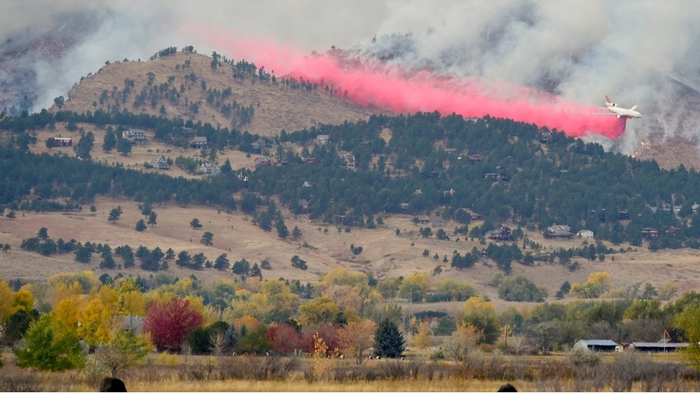Wildfires have become four times larger, three times more frequent since 2000 in US, study warns
Fires are altering vegetation composition structure and water supply to communities across US

Your support helps us to tell the story
From reproductive rights to climate change to Big Tech, The Independent is on the ground when the story is developing. Whether it's investigating the financials of Elon Musk's pro-Trump PAC or producing our latest documentary, 'The A Word', which shines a light on the American women fighting for reproductive rights, we know how important it is to parse out the facts from the messaging.
At such a critical moment in US history, we need reporters on the ground. Your donation allows us to keep sending journalists to speak to both sides of the story.
The Independent is trusted by Americans across the entire political spectrum. And unlike many other quality news outlets, we choose not to lock Americans out of our reporting and analysis with paywalls. We believe quality journalism should be available to everyone, paid for by those who can afford it.
Your support makes all the difference.Wildfires across the US have gotten larger, more frequent, and more widespread since the beginning of the millennium, according to a new study.
Research, published on Wednesday in the journal Science Advances, found that large fires in the US have not only become more common but are also spreading into new areas, impacting land that previously did not burn, due to the ongoing climate crisis.
“Projected changes in climate, fuel and ignitions suggest that we’ll see more and larger fires in the future. Our analyses show that those changes are already happening,” study lead author Virginia Iglesias from Colorado University, Boulder’s Earth Lab, said.
Scientists analysed data from more than 28,000 fires that occurred between 1984 and 2018 from the Monitoring Trends in Burn Severity (MTBS) dataset that combines satellite imagery with state and federal fire history records.
They found that there were more fires across all regions in the contiguous US in 2005-2018 compared to the previous two decades.
In the west and east, researchers say the frequency of fires doubled, and in the Great Plains, it quadrupled.
The amount of land burned each year, according to the study, increased from a median of 4,019sqkm to 14,249sqkm in the west, and from 1,204sqkm to 3,354sqkmin the Great Plains.
“We found compelling evidence that average fire events in regions of the United States are up to four times the size, triple the frequency, and more widespread in the 2000s than in the previous two decades,” scientists wrote in the study.
When the researchers assessed the most extreme fire events in each region, they found that in the west and Great Plains, the largest wildfires grew bigger and ignited more often in the 2000s.
Throughout the record, they found that large fires were more likely to occur around the same time as other large fires.
Researchers say the size of fire-prone areas increased in all regions of the contiguous US in the 2000s, indicating that not only is the distance between individual fires getting smaller than it was in the previous decades, but also the fires are spreading into areas that did not burn in the past.
“More and larger co-occurring fires are already altering vegetation composition and structure, snowpack, and water supply to our communities. This trend is challenging fire-suppression efforts and threatening the lives, health, and homes of millions of Americans,” Dr Iglesias explained.
The findings also indicate that the development of natural hazard zones is increasing wildfire risk.
“These convergent trends, more large fires plus intensifying development, mean that the worst fire disasters are still to come,” William Travis, co-author of the study, noted.
To adapt and build resilience to wildfire impacts, scientists said planners and stakeholders must account for how fire is changing and how it is impacting vulnerable ecosystems and communities.
Join our commenting forum
Join thought-provoking conversations, follow other Independent readers and see their replies
Comments